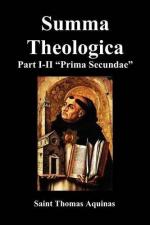it signifies the envious man, who refreshes himself
with the ills of others, as with snakes. The
swan is bright in color, and by the aid of its long
neck extracts its food from deep places on land or
water: it may denote those who seek earthly profit
though an external brightness of virtue. The
bittern is a bird of the East: it has a long
beak, and its jaws are furnished with follicules, wherein
it stores its food at first, after a time proceeding
to digest it: it is a figure of the miser, who
is excessively careful in hoarding up the necessaries
of life. The coot [
Douay: _porphyrion._
St. Thomas’ description tallies with the coot
or moorhen: though of course he is mistaken about
the feet differing from one another.] has this peculiarity
apart from other birds, that it has a webbed foot for
swimming, and a cloven foot for walking: for it
swims like a duck in the water, and walks like a partridge
on land: it drinks only when it bites, since
it dips all its food in water: it is a figure
of a man who will not take advice, and does nothing
but what is soaked in the water of his own will.
The heron [Vulg.:
herodionem], commonly
called a falcon, signifies those whose “feet
are swift to shed blood” (Ps. 13:3). The
plover [
Here, again, the Douay translators transcribed
from the Vulgate: _charadrion;_ _charadrius_ is
the generic name for all plovers.], which is a garrulous
bird, signifies the gossip. The hoopoe, which
builds its nest on dung, feeds on foetid ordure, and
whose song is like a groan, denotes worldly grief
which works death in those who are unclean. The
bat, which flies near the ground, signifies those
who being gifted with worldly knowledge, seek none
but earthly things. Of fowls and quadrupeds those
alone were permitted which have the hind-legs longer
than the forelegs, so that they can leap: whereas
those were forbidden which cling rather to the earth:
because those who abuse the doctrine of the four Evangelists,
so that they are not lifted up thereby, are reputed
unclean. By the prohibition of blood, fat and
nerves, we are to understand the forbidding of cruelty,
lust, and bravery in committing sin.
Reply Obj. 2: Men were wont to eat plants and
other products of the soil even before the deluge:
but the eating of flesh seems to have been introduced
after the deluge; for it is written (Gen. 9:3):
“Even as the green herbs have I delivered .
. . all” flesh “to you.” The
reason for this was that the eating of the products
of the soil savors rather of a simple life; whereas
the eating of flesh savors of delicate and over-careful
living. For the soil gives birth to the herb
of its own accord; and such like products of the earth
may be had in great quantities with very little effort:
whereas no small trouble is necessary either to rear
or to catch an animal. Consequently God being
wishful to bring His people back to a more simple
way of living, forbade them to eat many kinds of animals,
but not those things that are produced by the soil.
Another reason may be that animals were offered to
idols, while the products of the soil were not.




